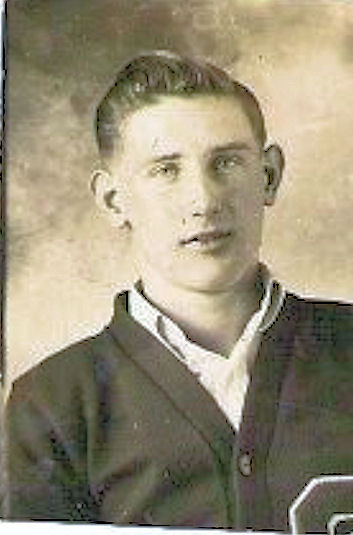
Wes's High School Photo
Sergeant
Wesley J Hayes, Army Air Corps (AAF)
| Somewhere far away in the dense triple-canopy
jungle of Papua New Guinea (PNG) lie the remains of one of Glendale’s
patriotic sons of World War II.
Wesley J. Hayes was born in Washington State in 1921.
His parents were Lillian Moriarty Hayes and Wesley James Hayes Sr.
He went to Glendale High School and was a member of the class of 1939.
After high school Wesley joined the Army Air Force (AAF) and with
the out-break of World War II soon found himself as a crew member of a
B-25 Mitchell medium bomber.
The airplane, named for Gen. Billy Mitchell, the most vocal
proponent of airpower in the 1920s, and famed for its role in the
Doolittle Raid on Tokyo, Japan, was new having initially flown in
1940. |
 Wes's High School Photo |
The airplanes in which he would fly had originally been
promised to the Dutch government but with the turbulence in the world at the
time were shipped in crates to Australia and giving to our AAF.
The 13th first flew out of a place called Charters Towers in
Queensland, but as soon as they were able to fight they moved to airfields at
Port Moresby, PNG. Port Moresby is
the capital of PNG, and was highly sought by both Japanese and Allied forces.
This city was where the Japanese naval fleet was headed when intercepted
by Admiral Nimitz’s fleet in the Battle of the Coral Sea. After that defeat they
would try again to attack Port Moresby with ground forces by traveling
cross-country from the North.
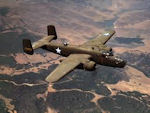 |
The B-25 bomber in
which Wesley flew, carried four thousand pounds of bombs with a crew of
seven which included the pilot, co-pilot, flight-engineer, bombardier
and gunners with .50 caliber machine guns.
It’s uncertain what position he had but as a Sergeant he was
probably a gunner. Not only
were the airplanes used to drop bombs while flying level but soon they
began diving at the earth while dropping.
Another tactic they developed to stop Japanese shipping was to
come in low and skip the bombs across the water like a flat rock as the
bomb crashed into the ship. |
It’s not
known how many missions Wesley flew before 24 May 1942 but we do know he was a
crewmember one of the six B-25s that departed from Port Moresby to attack Lae.
This mission was led by the 13th squadron commander,
Capt. Herman F. Lowery, and flying as usual without escort (because none was
available), cut through a pass in the mountains, swept wide of Salamaua, and
turned in toward Lae from the east to be met head-on by a strong force of 11
Japanese Zero fighters. The
attacking Japanese were led by Hiroyoski Nishizawa who was gaunt and sickly
looking, but in the cockpit of his Zero fighter known as ‘the Devil’.
Nishizawa reached the Mitchells first, and in moments his cannon shells
sent the lead place, flown by Captain Herman F. Lowery, crashing in flames just
beyond the Japanese airstrip. In
the running fight that ensued between Lae and Salarnaua, another Japanese pilot,
Ota, got the second B-25 in the formation, Sakai got two and Sasai another,
leaving only one riddled survivor to return to Port Moresby where it
crash-landed and was eventually patched back together sufficiently to ship it
elsewhere. Of the five airplanes
that were shot down only one crewmember on one airplane survived, a Sgt Murphy.
His pilot, Lt Keel ordered Murphy out of the aircraft and he barely
escaped by exiting through a hatch behind the cockpit.
Wesley Hayes was one of those thirty-four crewmembers that did not
survive that that. For his actions
that day and for giving his life for his country, Wesley Hayes was awarded the
Distinguished Flying Cross, Air Medal, and Purple Heart.
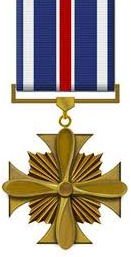 |
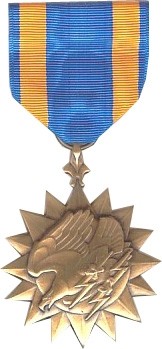 |
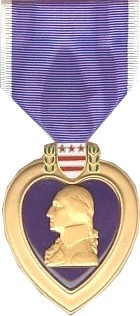 |
A few years ago Lee Dixon communicated with the only living
member of the surviving aircraft.
That lone surviving B-25 was riddled with cannon fire from the Zeros, but
managed to get into some cloud cover and escape the Zeros.
They barely made it back to Port Moresby, as the aircraft was a complete
wreck. He described how, after the
bomber’s machine guns were inoperable the Japanese pilots flew close alongside
the aircraft so close that one could see their faces and their white scarf.
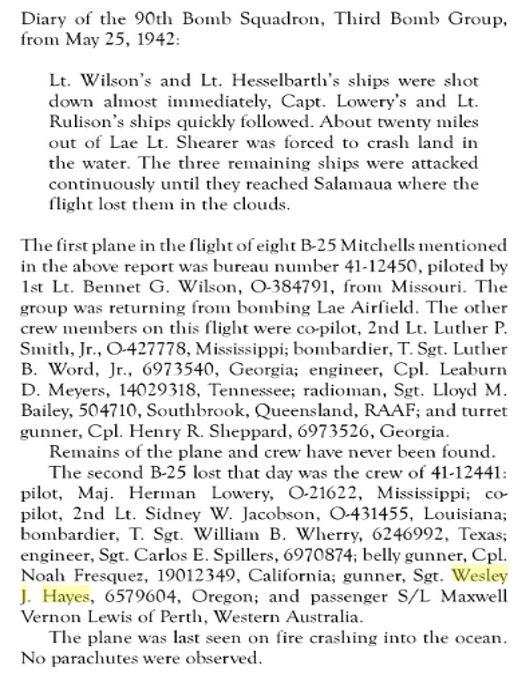
Here are the members of Sergeant Hayes crew:
|
CLANTON GUY E |
SGT |
14006584 |
Mississippi |
25-May-42 |
|
FRESQUEZ NOAH |
CPL |
19012349 |
California |
25-May-42 |
|
HAYES WESLEY J |
SGT |
6579604 |
Oregon |
25-May-42 |
|
JACOBSON SIDNEY W |
2LT |
0-431455 |
Louisiana |
25-May-42 |
|
LOWERY HERMAN F |
MAJ |
0-021622 |
Mississippi |
25-May-42 |
|
MUTCH WILLIAM A JR |
CPL |
33099073 |
Pennsylvania |
25-May-42 |
|
OLIVER RAY A |
M SGT |
6725145 |
Michigan |
25-May-42 |
|
RULISON ARDEN M |
CAPT |
0-393203 |
California |
25-May-42 |
|
WHERRY WILLIAM B |
TSGT |
6246992 |
Texas |
25-May-42 |
Distinguished Service Cross
SYNOPSIS: Captain (Air Corps) Herman F. Lowery (ASN: 0-21622), United States
Army Air Forces, was awarded the Distinguished Service Cross for extraordinary
heroism in connection with military operations against an armed enemy while
serving as Pilot of a B-25 Medium Bomber in the 13th Bombardment Squadron, 3d
Bombardment Group (L), FAR EAST Air Force, while participating in bombing
missions during the period 10 through 14 April 1942, in action against enemy
Japanese forces in the Philippine islands. Captain Lowery participated in a
daring 4-day mission under the command of Brigadier General Ralph Royce, who led
a flight of seven B-25Cs and three B-17s from Australia to a staging field at
Del Monte on Mindanao in the Philippine Islands. Over the following two days the
B-25's and B-17's attacked the many ships and the docks at Cebu, the air and
harbor facilities at Davao, and Nichols Field on Luzon. The B-25 Mitchell's were
involved in over twenty sorties. They sank one Japanese transport and possibly
two others. They also shot down three Japanese aircraft. All but one of the
aircraft returned to Australia without the loss of a single flyer, and they
brought out a number of important military and diplomatic personnel who had
gathered at Del Monte to await evacuation. The personal courage and zealous
devotion to duty displayed by Captain Lowery during this period have upheld the
highest traditions of the military service and reflect great credit upon
himself, the Far East Air Force, and the United States Army Air Forces.
General Orders:
Headquarters, South West Pacific Area, General Orders No. 56 (1942)
Action Date: April 10 - 14, 1942
Service:
Army Air Forces
Rank: Captain
Company: 13th Bombardment Squadron
Regiment: 3d Bombardment Group (L)
Division: Far East Air Force
It was a very sad day, indeed, for the 13th but
they continued on. Ironically, less
then a year later, in April 1943 a nasty Japanese attack on Port Moresby
destroyed all of their airplanes.
But the unit was not finished. When
I went to Vietnam in 1967, one of the bombers squadron to which I provided radar
controlled was that same13th Bomb Squadron.
They had a number of newer model of airplanes over the years and at that
time they were flying the B-57, Canberra.
Today the 13th Bomb Squadron is equipped with the B1 bomber at a base in
Texas called Dyess AFB. While the
youngsters flying the B1 may not know what Wesley Hayes from Glendale personally
contributed to the organization and the Country, they do know and respect the
courage and heroism of all those that went before and who paid the ultimate
sacrifice for the freedom and liberty which we have today.
Because of his service in the Pacific Sergeant Hayes was also awarded the Asiatic Pacific Campaign Medal, World War II Victory Medal and American Defense - World War II Medal. Those are shown below:
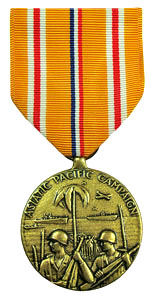 |
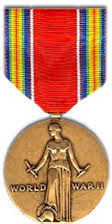 |
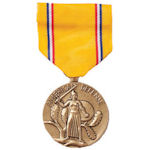 |
While the remains of Sergeant Hayes were never recovered, he was recognized for his sacrifice in a number of ways. He was recognized at the Tablets of the Missing at Manila American Cemetery, Manila, Philippines. In 2009 Wes Vaughn travelled to the Philippines and took photos of the cemetery where Sergeant Hayes is remembered. These are photographs of that cemetery:
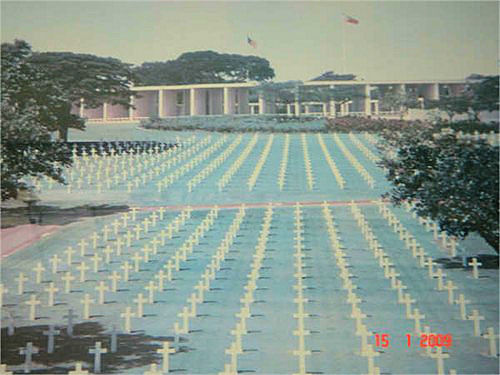 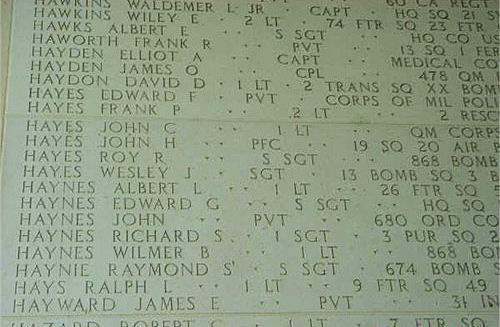 |
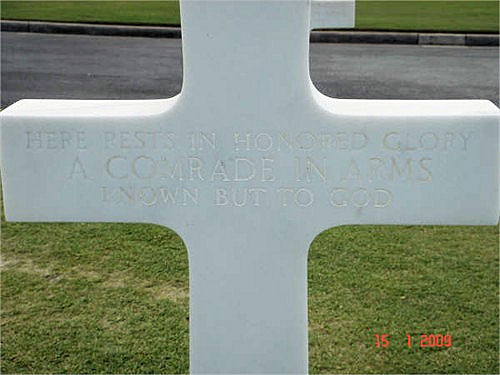 |
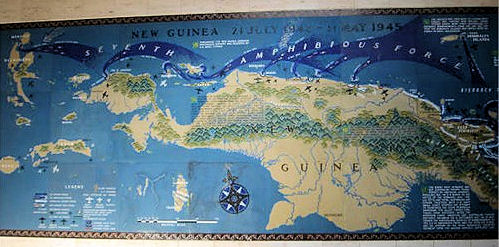 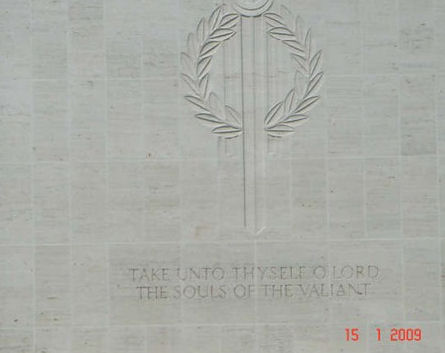 |
|
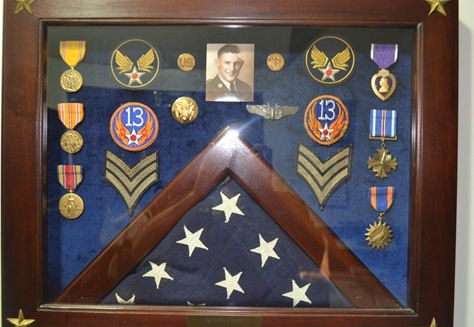
| Post Script to this story comes from the hard work of Kathy (Tooley) Vaughn and Lee Vaughn. Their exceptional efforts along with Lee's brother, Wes, were essential to a better understanding of Sergeant Hayes's story and ancestors. Through Kathy's research we've learned that his Mother, Lillian (Moriarty) Hayes died when Wes was two years old. Eventually his father, Wes Sr., remarried. She also discovered the Grandfather of Wes, Jr., Eugene Moriarty, was born in Tipparary, Ireland and came to this Country as a small boy. During the Civil War he served as a musician in New York because of his young age and then in Minnesota. After the Civil War he remained in the Service and was eventually posted to the West. Sergeant Hayes' grandfather died of pneumonia on 21 Aug 1904 at Fort Stevens, near Warrenton Oregon . Here was a career military man who came from another country to serve in the American Civil War, in the Spanish American War and finally went West while serving his adopted Nation. Little did he know that his Grandson would also give life for his Country years later in World War II. |
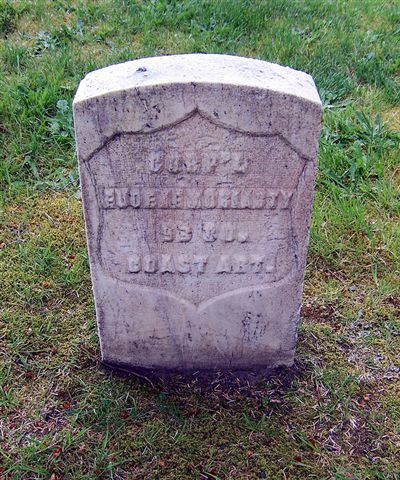 |